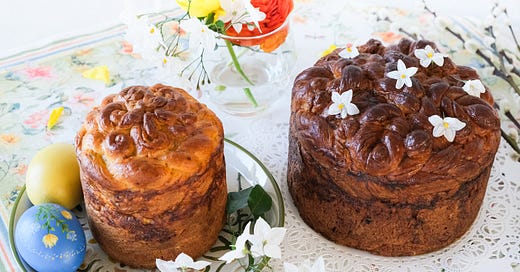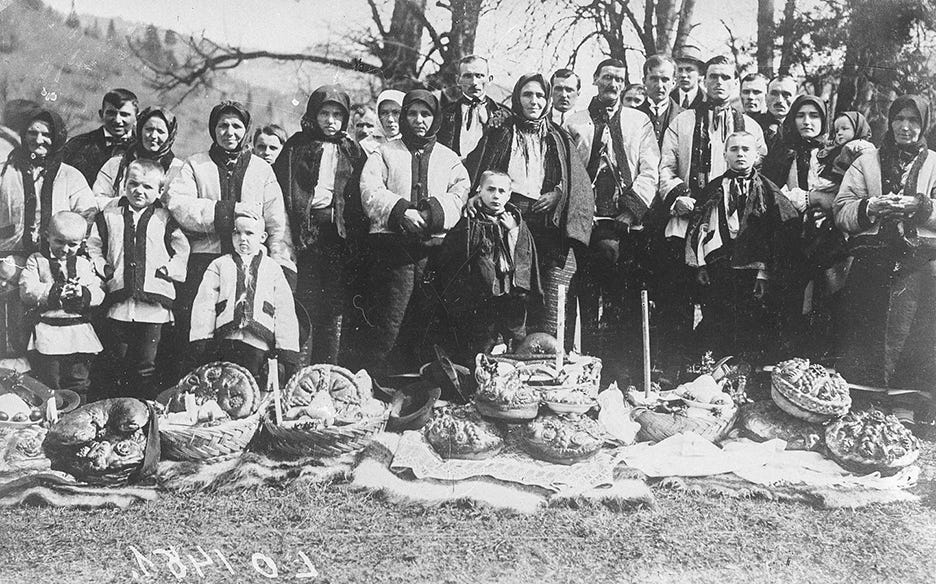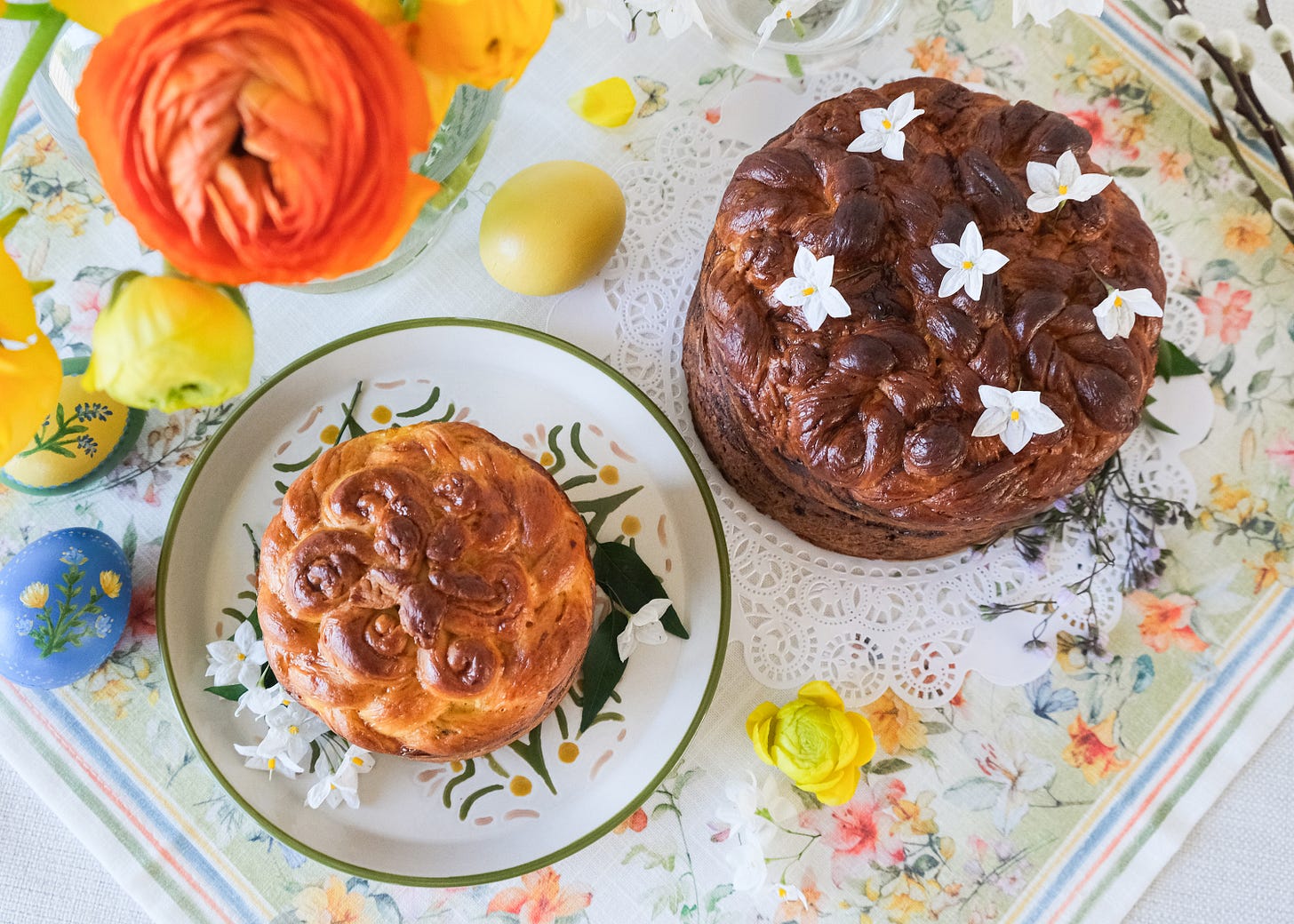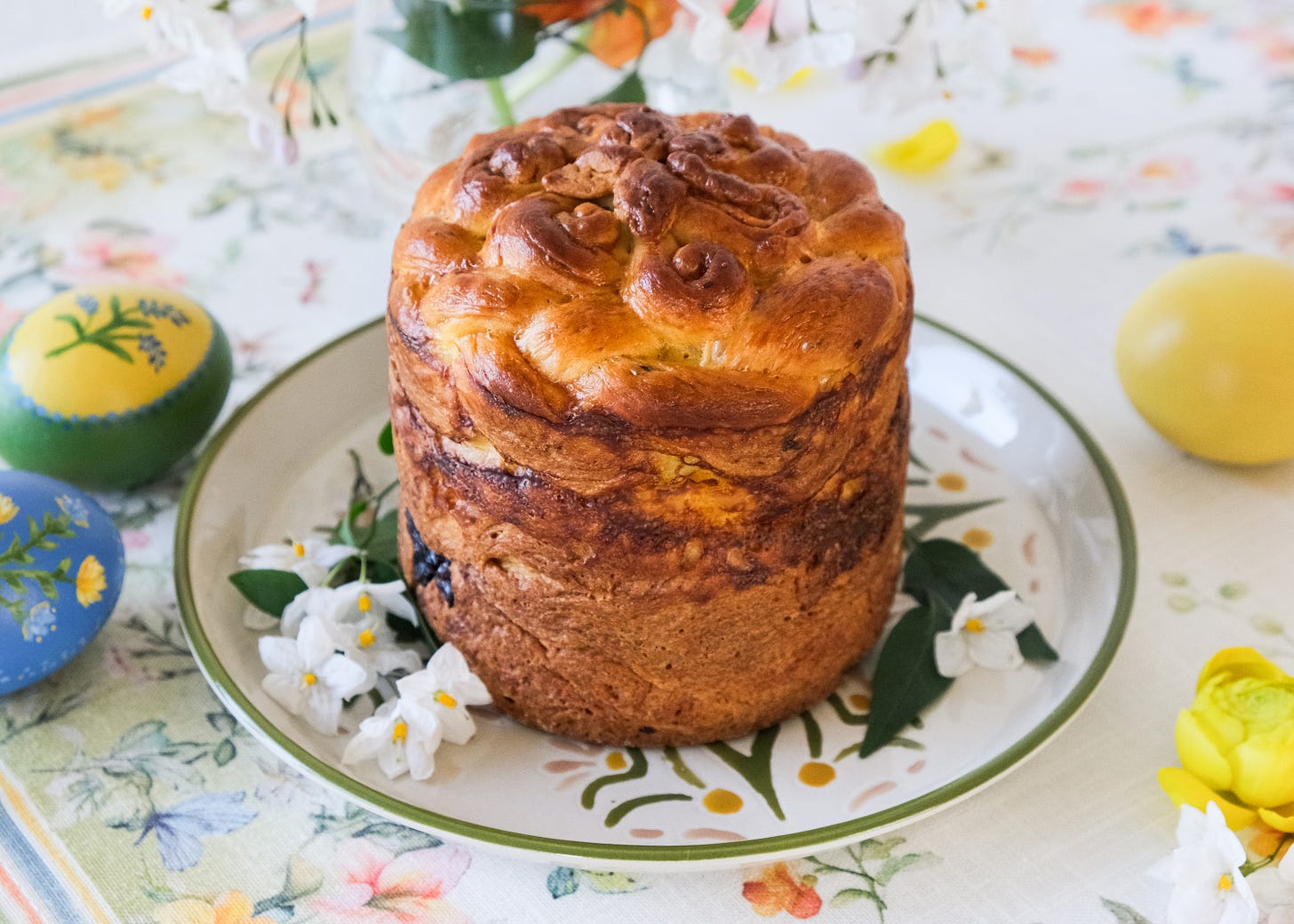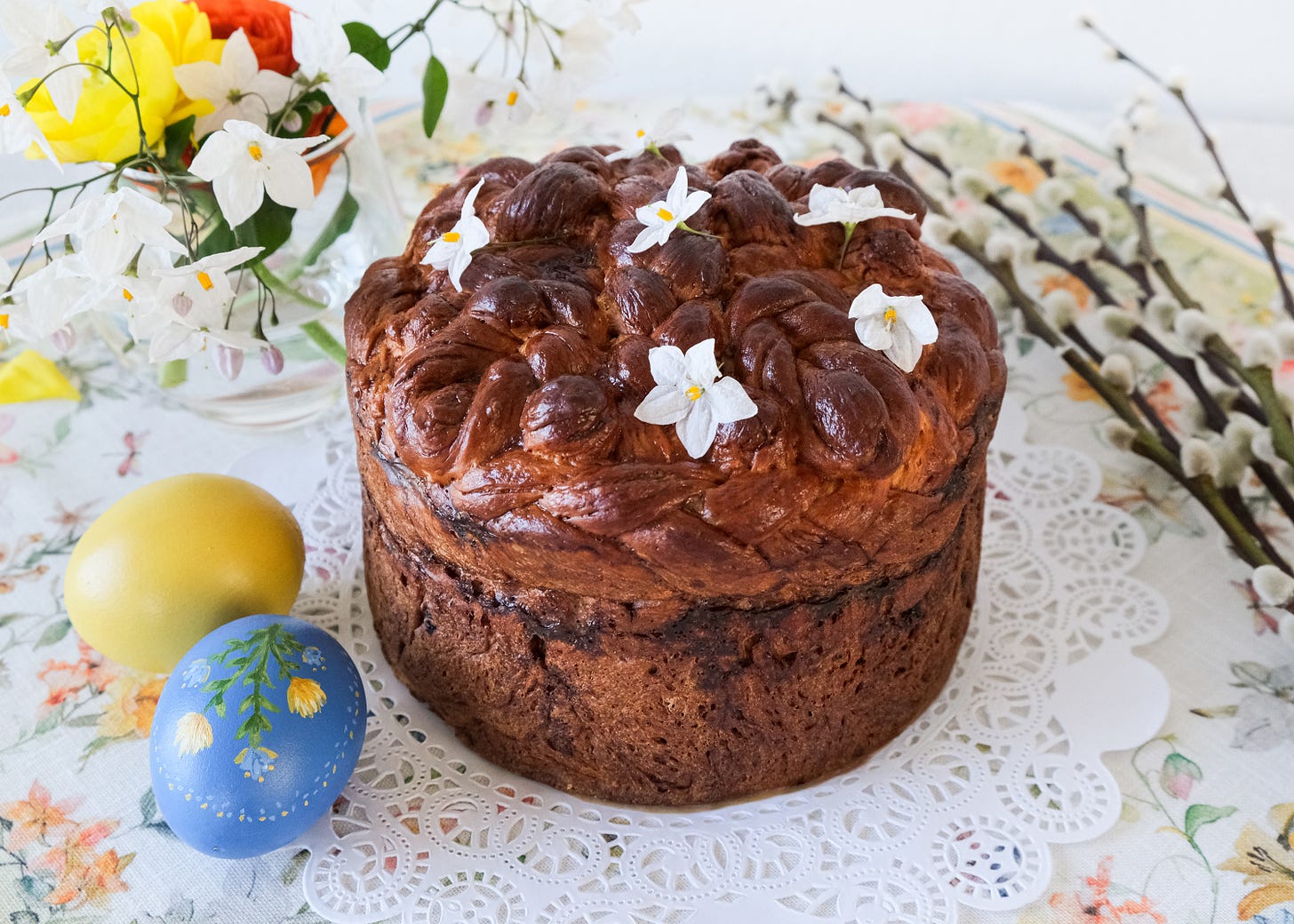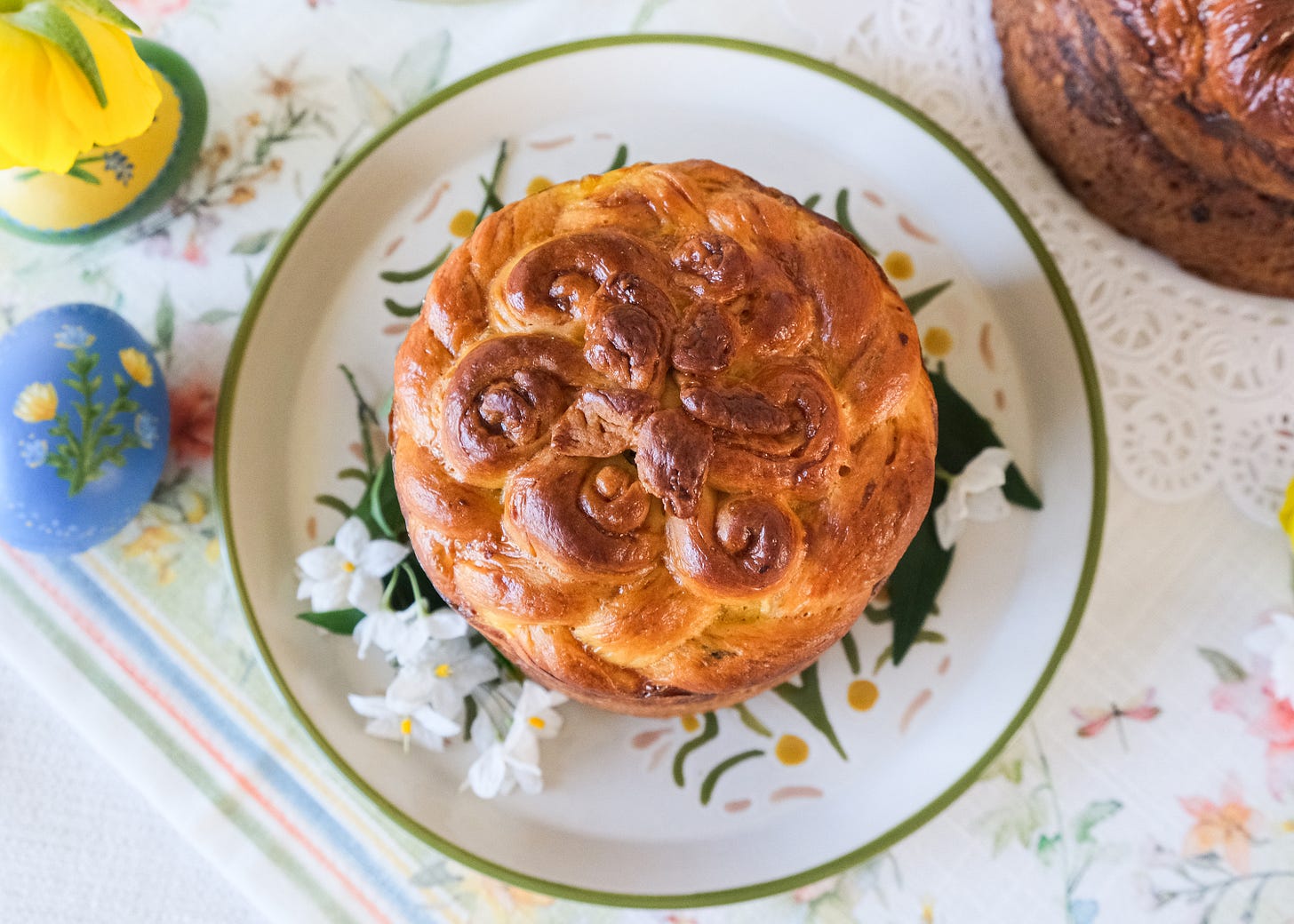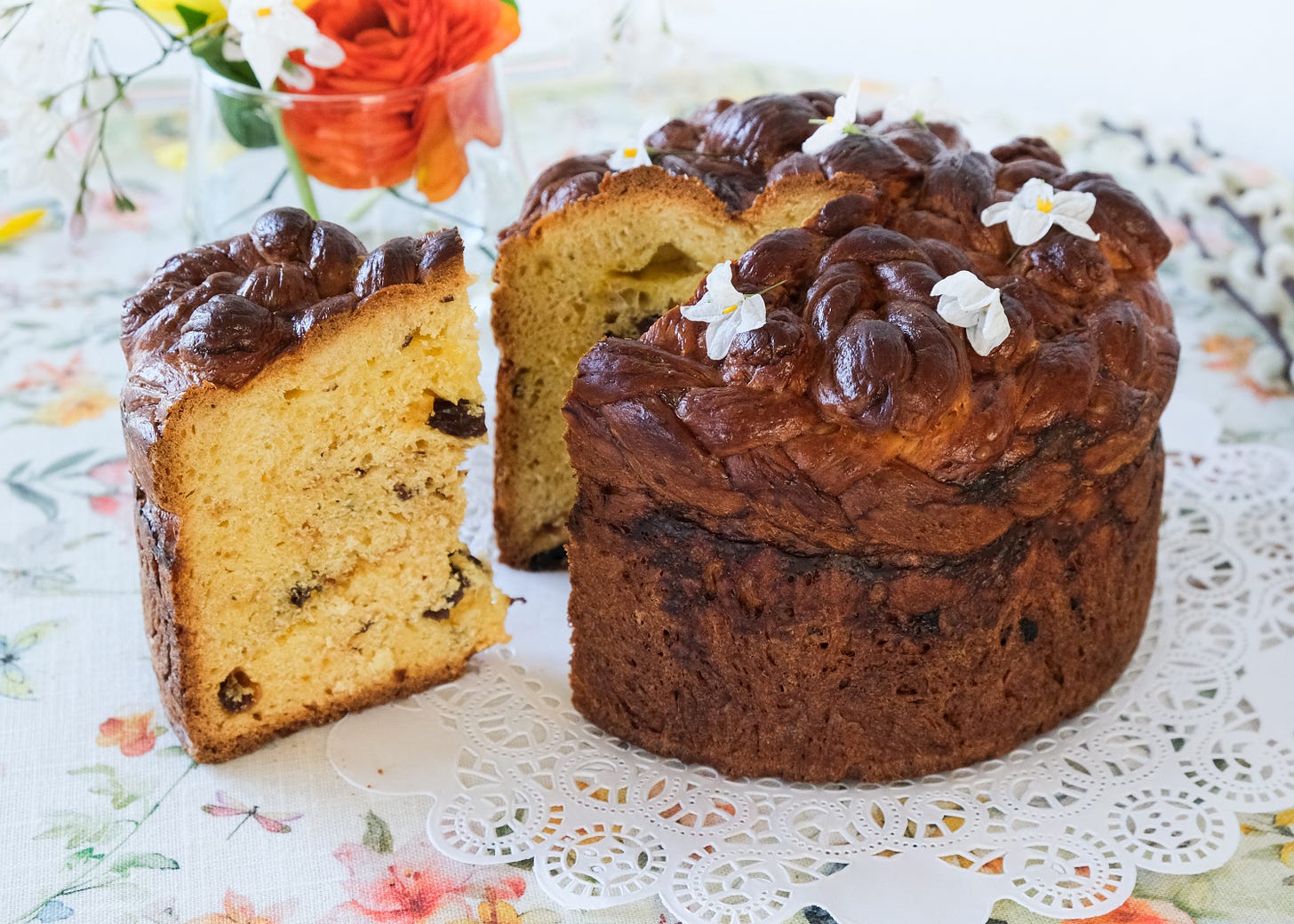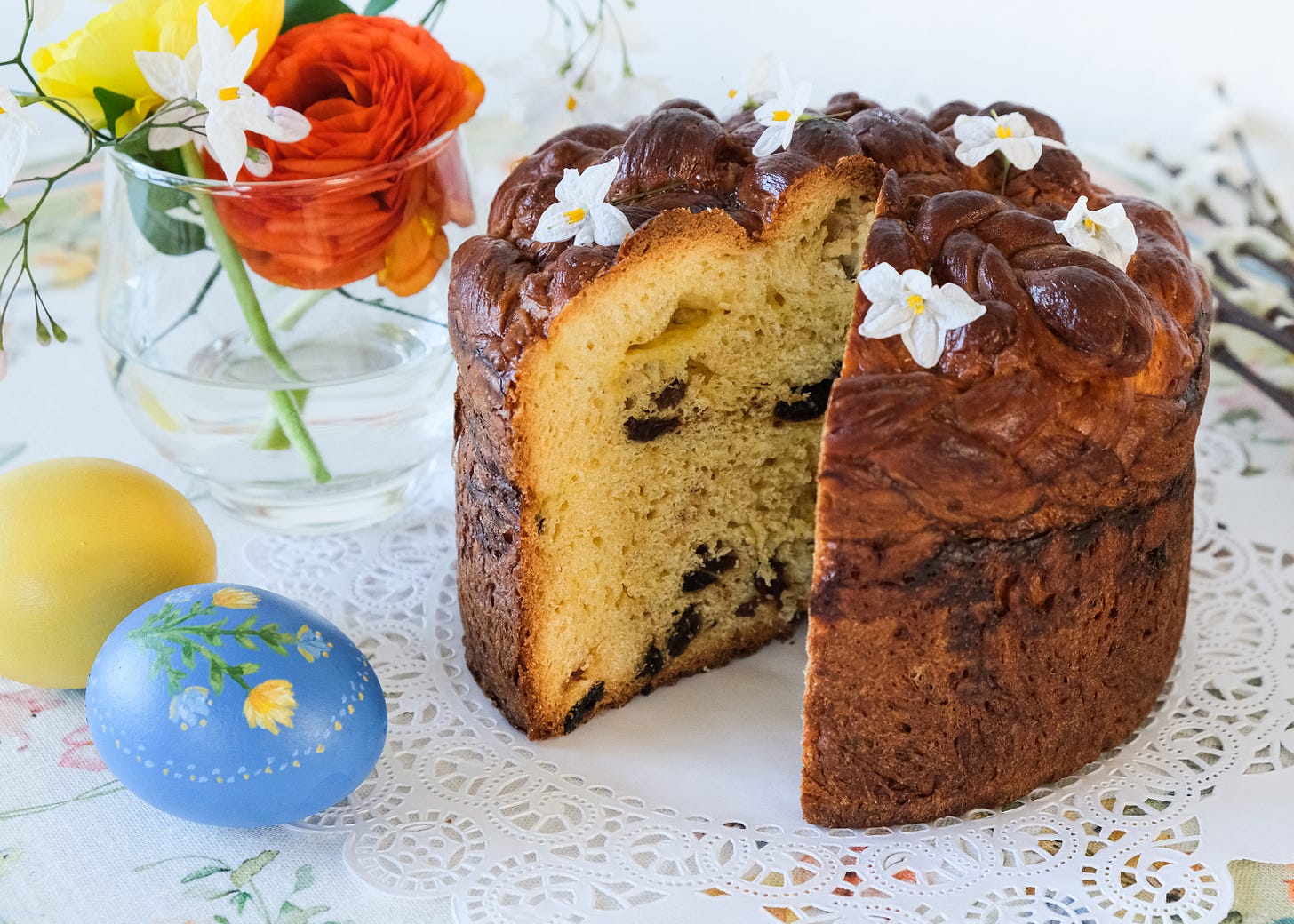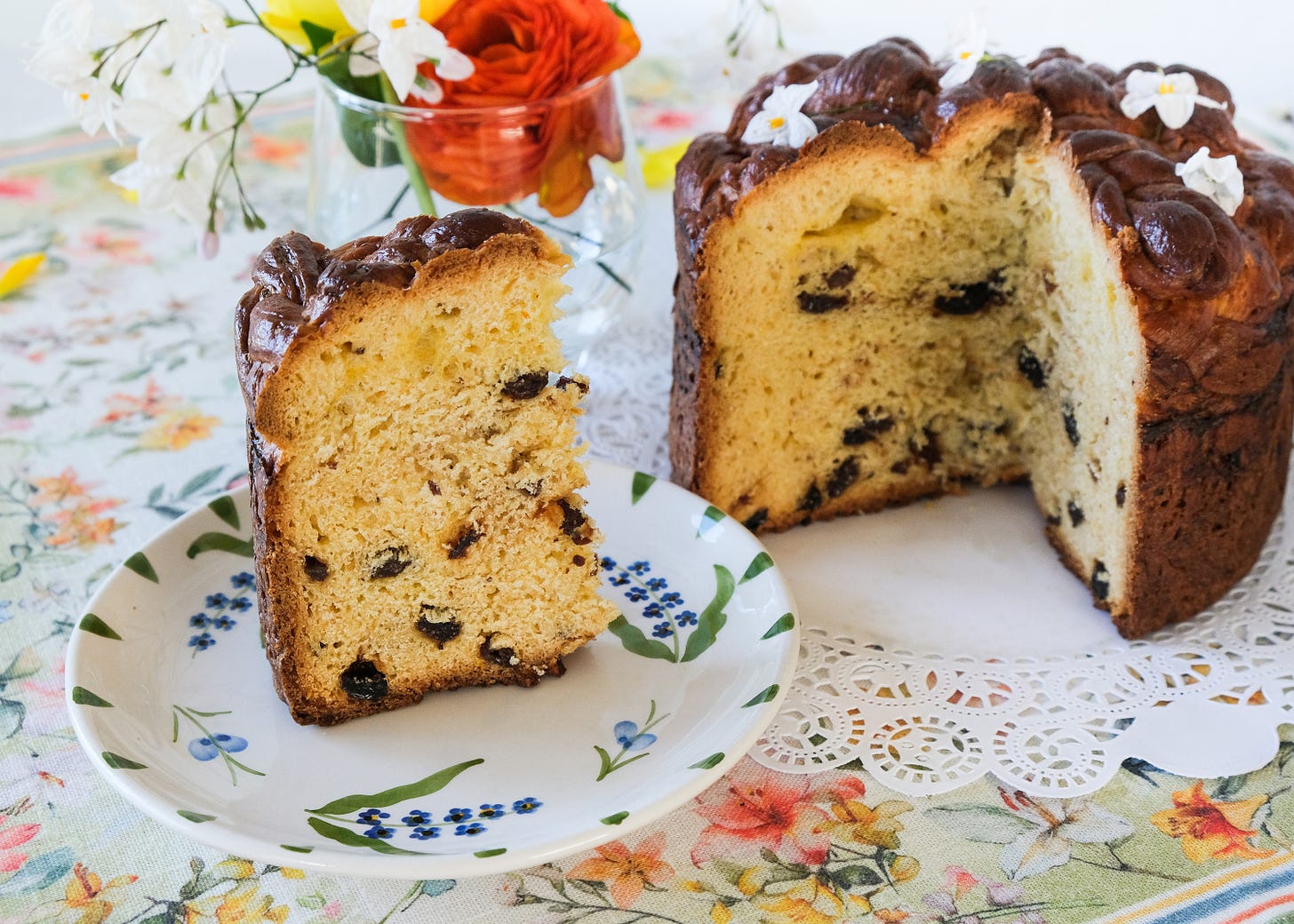Paska – traditional Ukrainian Easter bread
The history and recipe for delicious, sweet, and buttery bread – the heart of the Ukrainian Easter table.
This post is a part of the series of family recipes that are cherished, loved, and passed down through generations in my Belarusian and Ukrainian families. I cook each recipe from scratch and include detailed descriptions and photos of each step, as well as cooking secrets and tips. View all family recipes from Eastern Europe.
Paska is a traditional Easter bread. It is lightly sweet, buttery, and rich in flavor and texture, and so delicious, it disappears from the plate in seconds. However, paska is not just a bread, but also a symbol of life, family, and hope. The tradition of baking paska goes back to pre-Christian times, when people baked round breads to celebrate the sun, spring, and the awakening of nature. With the arrival of Christianity, the bread became the symbol of resurrection. Easter is one of the biggest holidays in Ukraine, and baking, but more importantly, eating paska, is the most anticipated event of the year.
Paska is usually baked either on Thursday or Saturday before Easter, and then the bread is brought to church to be blessed. There is a belief that the higher the paska rises while baking, the better the year will be ahead. Another belief is that when sharing paska among family members, the one who gets the larger piece will have more luck. In some regions of Ukraine, people spread paska on the fields for a good harvest.
Each Ukrainian family has their own paska recipe and secrets that are passed through generations. Historically, the process of baking paska has been an entire ritual: it required a quiet and clean house, a good mood, and prayers. In some regions of Ukraine, there was a competition for baking the largest paska, and often, people had to reassemble the clay stove where the paska was baked in order to take it out.
Usually, paska was decorated with the dough ornaments, where each shape had its own meaning. The popular decorations included crosses, braids, swirls, wheat ears, flowers, leaves, stars, and birds. In the recipe below, I’ll show you how to make some of the traditional decorations from the dough step by step. In some Ukrainian families, there was a tradition of baking a separate paska for each family member with different decorations. Paska for girls was decorated with flowers as a symbol of beauty and future motherhood. Paska for boys was decorated with oak leaves as a symbol of strength and the continuation of the family. Little kids received a paska decorated with stars and birds.
Baking Easter bread is a common tradition in all Eastern European countries. In Belarus, the Easter bread is also called paska and shares similar ingredients and a set of beliefs. When I told my Belarusian mom that I baked paska for this recipe post, she immediately asked whether I was in a good mood, as it is the main condition for a successful and tasty result. I reassured her that I was. I also asked my grandma about how paska was baked when she was growing up, and she remembered that her mom always added dried blueberries to the bread, which is a very interesting detail I didn’t know before.
In modern times, paska is not only a religious dish, but more of a traditional one. It reminds us of the past and holds hope for the future. It keeps the culture and memories alive, despite the never-ending attempts of the enemies to erase them. Paska is always shared with relatives and friends, bringing people together.
Below, I shared a traditional paska recipe from my Ukrainian mother-in-law. I hope you will try baking paska and bring a taste of Ukraine to your home!
Happy Easter!
Below, you will find the step-by-step recipe instructions and photos of each step, which are available for paid subscribers. By upgrading to paid, you won’t only receive access to all family recipes from Eastern Europe, but will also allow me to continue my work and support both of my families who became refugees and whose recipes I share with you.

